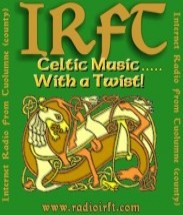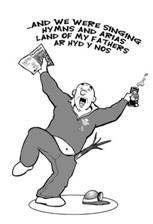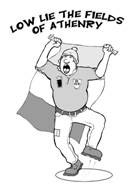Blogs
| Firstly you'll need to set up an account with Blip.fm ( http://blip.fm/home ) and then you'll need to head on over to Ping.fm and do the same ( http://ping.fm/ ). Blip allows you to create your own online radio station and broadcast your favorite music to friends and other 'DJ's' on the site. Ping allows you to post status updates and blogpost urls to all your favorite social networks with one simple click. The real magic happens when you combine the two. After setting up your Ping account you must decide which accounts you want it to update. All the major social networks are on the list ( Facebook, MySpace, Twiter etc ) although Ning currently only allows you to select one network. Updates to multiple networks are currently a work in progress. After that its simply a question of adding the Ping app to your Blip account. On the navbar on your Blip account homepage click on 'me' and scroll to the bottom of the page. There you'l find a selection of links:-
|
Welsh Folk Dance at NAFOW
WELSH DANCES The history of Welsh folk dancing is a sad one. With the advent of the Non-conformist sects in the 18th and 19th centuries, the chapels saw the Welsh folk arts and customs as sinful and not in keeping with chapel teaching. They did their utmost to stamp out all sorts of "sinful" folk entertainment except, of course, hymn singing and music in the chapels. Some saw the damage that was being done to the culture and managed to record the dances on paper. Like most music of that period, there was a lot of exchange and borrowing between Wales, England, Scotland, Ireland and Europe and a number of Welsh dances went into British/English collections, and tended to retain the original Welsh names in translation to English. By the start of the 20th Century, folk dancing contributed very little to Welsh culture. In the Twenties, a few people started to take interest in the old dances. In the 1940s, Lois Blake and Gwyn Williams led the way in reviving the Welsh dancing tradition and in 1949 the Welsh Folk Dance Society was formed, with the aim of promoting and resurrecting the old dances. Today, there are over twenty adult teams and hundreds of teams in the schools and clubs across Wales. This program is for all ages and will teach participants a number of Welsh dances, which will be taught by Sian Frick, a well-known and experienced instructor. Music will be provided by the Portland band, Beltaine. Come, enjoy a good time.
SIN FRICK , Welsh Dance Instructor. Sin is a British national of mainly Welsh parentage. From 1984 to 1991 she attended Cymdeithas Ddawns Werin Cymru (Welsh Folk Dance Society) workshops in Wales to learn the spirited but light-footed Welsh dances, and in 1988 she earned the Cymdeithas Instructors Certificate, Part 1. From 1986 to 1992 Sin led her group Dawnswyr y Tract Cymreig/The Welsh Tract dancers, based in Newark Delaware, and in 1991 she was a member of the Dawnswyr Mn display team in Anglesey for six months. Sin is frequently invited to teach Welsh folk dance workshops and give clogging demonstrations at many of the Celtic festivals in the mid-Atlantic region. On her regular visits to Wales she has joined Welsh teams performing dances at various events such as the Gwyl Ifan (Midsummer) Festival in Cardiff.
BELTAINE is a Northwest trio featuring hammered dulcimer, guitar, flute, and marimbula. They are unique in their blend of instrumentation. Their styles range from Celtic to traditional music from around the world. They do not limit themselves to any one genre. Their backgrounds include folk, rock, classical, jazz, and blues. They choose music that speaks to them. They try to put their spin on these tunes to make them unique to Beltaine. Their music is their passion, and they love playing and performing around the Northwest. They are excited to hear that others enjoy their music and they love stories about the music.
|
He is remembered in the name of a street a pub and a school in Cardiff. His achievements are recorded on a clock face in Cardiff Bay but his grave lies forgotten and neglected in Cardiffs Cathays Cemetery.
His gravestone tells us
Captain E. T. Willows
Only beloved son of Joseph and Eva Willows
Died August 3 1926
At rest
The letters on the simple stone are metal and are falling off. Without them his grave will lose its identity and become no different from the others that have faded beyond recognition. Yet it is a perfect example of a story in Welsh Stone a fading,unremarkable gravestone, quietly shedding letters behind bushes in an overgrown part of a large cemetery, slowly slipping into the past and taking a fascinating story with it.
Ernest Thompson Willows, aviation pioneer and celebrity, 1886 1926.
He was born on 11 July 1886 at Newport Road in a house which is now used by the University. His father was a dentist and Ernest always intended to follow him, beginning his training in 1901. His great enthusiasm was flight. These early days were exciting ones, when the sky seemed to be opening up to all sorts of possibilities. It was the time of the Wright Brothers, of Bleriot, of Latham. Ascents by balloon had been commonplace for over 100 years but Willows wanted greater control and to reduce the effect of the wind on such flights. What he wanted to do was construct a rigid framed balloon or dirigible and to provide it with a motor and a crew who would be able to steer it. He was sure that the future of travel lay with the airship rather than the aeroplane. He had no formal technical training, no financial backing, merely blind enthusiasm.
He built his first airship, Willows 1 , in 1905, two years after the Wright Brothers significant achievement, when he was only 19. It was a silk envelope 74 feet long and 18 feet in diameter with a gondola beneath. It was driven by a 9 h-p Peugeot motorcycle engine. It had neither rudder nor elevator, relying upon the twin propellers which provided steering capability. It was flown for the first time at East Moors Cardiff for 85 minutes on 5 August. It had six flights. An improved version was built in 1909 which was called Willows 2. The craft was a little longer and bigger. He landed in a great publicity stunt outside Cardiff City Hall on 4 June 1910 and then flew back to his shed at East Moors. He wanted to win a 50 prize for the first such flight over Cardiff. A week later he repeated the flight to raise funds for the Infirmary. Willows was always trying to attract attention to his projects. He was a committed enthusiast but always lacked sponsorship or support.
In July 1910 it flew from Cheltenham to Cardiff in four hours and then in August Willows 2 flew from Cardiff to London.
This was a significant moment.
The flight was a record for a cross country flight in Britain at 122 miles and he became the first aviator to fly across the Bristol Channel under power. The journey took 10 hours. He had to descend to about 12 feet off the ground and ask for dircections from stunned people via a megaphone. The world was not yet ready for this simple SatNav prototype. In the end he followed the train line.
He made sure that he flew down the Thames and over St. Pauls cathedral for he was always eager to place his airship in the same frame as important landmarks.
On arrival he heard of a prize of 2000 for the first man to fly from Paris to London so he decided to take the airship over the channel in order to make an attempt. Willows 2 was re-built and lengthened and called originally Willows 3 . It first flew at the end of October 1910 over White City. Then it was re-named The City of Cardiff. It was now time for adventures.
On 11 November 1910 he flew the City of Cardiff across the Channel heading for Paris with his mechanic Frank Godden. The journey was not without incident.
There was thick fog over the Channel. There was a mechanical problem which required Willows to climb out on to the balloon envelope to fix it in the dark Petrol froze in the engine. Then Godden dropped their maps over the side and into the sea.
Eventually the airship came down at Corbehem, between Arras and Douai because of a problem with the silk envelope. On landing the French customs tried to charge him 30 import duty on his fuel. In the end it took almost 8 weeks to reach Paris.
He arrived on 28 December 1910 and on New Years Eve he was taking flights around the Eiffel Tower to illustrate the manoeuvrability of the design. This however illustrated his constant difficulty. His balloon fascinated as a novelty but he could not attract he investment he craved to take his concept further.
He returned to Cardiff with his balloon by road, unable to face any more continental dramas and also apparently to escape the customs officials.
Ernest Willows moved to Birmingham and built a new airship Willows 4 which was flown in 1912 and was sold to the Admiralty where it became His Majestys Naval Airship Number 2. They paid 1,050 for it. This one was more streamlined and has two four-bladed propellers and a two-seater gondola which was soon extended to accommodate a third man. It had a maximum speed of 50 mph.
Production was moved to Welsh Harp in Hendon in 1913, where he developed Willows 5 . This one had a rubberised fabric and a gondola for 4 people. He used it largely to take people on trips above London.
Of course the war intervened and he built barrage balloons in Westgate Street in Cardiff and also in Llanishen. In fact he developed a barrage balloon which flew twice as high- at 10,000 feet -as the previous limit. In 1916 he joined the Royal Flying Corps and became a captain, constantly suggesting new ideas and refinements.
His enthusiasm however made him little money. After the war he continued with ballooning though perhaps with a growing realisation that great success would elude him. By October 1921 he was living on a decaying river boat on the Thames and watching others develop the airship.
There is a great sadness that just before he died he would have known that Amundsen had flown over the North Pole in the airship Norge piloted by the Italian Umberto Nobile. It could have been him. If only....
Willows was reduced to tethered balloon flights at fairs. And that is how he died.
He was killed on 23 August 1926 at a Flower show in Hoo Park Kempston, Bedford whilst taking people on aerial joy rides. The net covering the balloon tore away and the basket plunged to the ground killing him and his four passengers.
He had been the first person to hold a pilots certificate for an airship from the Royal Aero Club but he had been left behind by a lack of support and finance and his dreams and schemes fell to earth just as he did.
You will find him in Cathays, in the largest municipal cemetery in Wales. It is very hard to find your way around but the very helpful Cathays Cemetery Heritage Trail will guide you to Grave Number 20.
You can download the guide from http://www.cardiff.gov.uk/objview.asp?Object_ID=3764&
I have also posted this story on my own website - and if you go there you will find some pictures of the man, his balloons and his grave... www.storiesinwelshstone.co.uk
Looking for pub quiz questions for your Welsh society St David's Day meetup? Then look no further. The Americymru Welsh QuizPack contains five sets of ten questions on the following topics:-
Know your Jones's?
Know your Welsh Mountains?
Where in Wales?
Dates in Welsh history?
Welsh Celebrity Birth Dates?
Just head to the bottom of this post and download and print the PDF attachment. The correct answers are underlined in the text ( all questions are multiple choice ) All of these quiz sets have appeared on Americymru but are not currently featured on the site.
For the Quizmaster ( correct answers underlined )
Americymru Welsh Pub Quiz Pack for St. Davids Day (PDF)
Quiz printout ( no underlining )
Americymru Welsh Pub Quiz Pack for St. Davids Day2 (PDF)
Looking for a three course recipe to celebrate St David's Day (March 1st), the national day of Wales? Then look no further.

March 1st is Saint David's Day, the National Holiday of Wales, a day to celebrate for the Welsh and Americans of Welsh descent. In Wales, people celebrate Saint David's Day by attending church services, wearing leeks and daffodils (national symbols of Wales and St. David), holding parades and children's parties in the schools. Saint David, Dewi Sant in Welsh, lived in the 6th Century and is unique among British saints in that a surprising amount of information was recorded about his life. He was probably the son of Usai, the king of Ceredigion, and the daughter of a lord of what would later be called Pembrokeshire and was the student of another Welsh saint, Paulinus. Dewi Sant was renowned as a teacher who founded monastic settlements and churches in mostly pagan Wales, Cornwall and Brittany. Today, Saint David's Cathedral stands on the site of a monastery he founded in Glyn Rhosyn (Valley of Roses) in Pembrokeshire.
The monastic rule of Dewi Sant taught humility, simplicity and asceticism and he practiced these himself: that monks ploughed, planted and tended their crops themselves, without draft animals; that they drank only water and ate only bread with salt and herbs and never meat or beer; that they spent their evenings in prayer, reading and writing; that no member of the monastery had any personal possessions, everything belonged to them all. Dewi Sant's last sermon was recorded as including the words, "Do the little things that you have seen me do and heard about.... Do the little things in life," and this phrase, "Gwnewch y pethau bychain mewn bywyd," ("Do the little things in life") is a phrase used today.

Recipe And Ingredients
2 new, unused, unglazed or painted, bare 6-inch terracotta flower pots
Parchment paper
1 1/2 cups Spelt flour
1/2 cup milk warmed to room temperature
1/2 cup water warmed to room temperature
1/2 cup whole wheat flour
1/2 oz or two packets fresh or dried active yeast
1 egg
4 tbsp melted butter
2 Tbs finely chopped scallions
1 Tbs chopped fresh chives, chopped
1 1/2 tsp salt
1 Tbs honey
1 tsp chopped fresh sage
1 tsp crushed fresh rosemary leaves
1 clove crushed garlic
Seasoning flower pots
This step can be done in advance of preparing the bread, at any time.
Pre-heat oven to 175F
Thoroughly wash pots inside and out and dry well. Coat pots all over (including the rim and the bottom) with olive oil inside and out, using a basting brush or paper towel. Place pots in oven on a cookie sheet and bake at 175F for about 20-30 minutes, or until dry. Remove pots from oven and allow to cool. Repeat this process three times.
Preparing Pot Bread
Preheat oven to 400F.
Slightly warm two tablespoons of the milk and dissolve the honey in it. Allow to cool to lukewarm and add the yeast and mix into a thin paste. Cover and set aside in a warm place for 15 minutes or until yeast is well grown and foamy.
Sift together flours and salt in large bowl, make a well in the center and pour the yeast mixture into the well. Add water, butter, onions, herbs and garlic, mix together well and knead on floured surface about 5 minutes, adding additional spelt flour in small amounts until it becomes a smooth, elastic dough. Pat dough into a ball shape. Place dough ball in a lightly warmed, greased bowl and cover in a warm place for approximately one hour, until dough has risen to double in size.
Turn dough out onto floured surface and punch down only to knock out all the air, kneading lightly. Separate dough into two equal-sized balls. Place a circle of parchment paper to cover the bottom of each pot and place a dough ball on it. Cover each ball of dough and put in a warm place for approximately a half hour to an hour, until dough balls have risen to double in size or until they stop rising. Gently brush tops of each loaf with well-beaten egg. Place pots on cookie sheet in oven preheated at 400F for 30-40 minutes, until golden brown. Remove from oven and turn out to cool.

Recipe And Ingredients
4 large lamb loin chops
extra-virgin olive oil
1/2 cup chopped fresh parsley
2 Tbs chopped fresh sage
2 Tbs chopped fresh rosemary
2 Tbs chopped fresh thyme
1 Tbs dark brown sugar
1 tablespoon fresh ground black pepper
1 tsp salt
2 large Walla-Walla onions, sliced thick
3 large cloves of garlic, coarsely chopped
1 cup Cabernet Sauvignon
2/3 cup Balsamic vinegar
Preparation
Pour 2 Tbs olive oil into hot pan over medium heat. Season lamb chops on both sides with salt and pepper and add to pan. Pour onions over chops and cook until lamb is browned on both sides, about 5-7 minutes each side, stirring onions until they are clear. When lamb is cooked, remove chops and cover.
Sprinkle brown sugar over onions and saute, stirring frequently until onions are browned and coated with sugar. Add garlic and herbs and saute for about a minute. Add vinegar and wine and boil in pan until reduced to glaze, about three minutes. Spoon over chops and serve.

This dessert is a sweet, early spring treat in the UK and the US and there are many versions of it to be found. Our version is simple and easily modified for larger or smaller groups. Today Caerphilly cheese is made in different parts of the UK but it originated, of course, in the area of the town of Caerphilly, in South Wales. Rhubarb was probably brought to the United Kingdom thousands of years ago and is today grown in Wales and popular in desserts, wines and other recipes.
Serves 4
Filling
2 Tbs. orange juice
2 tsp. cornstarch
1 1/2 cup diced fresh or frozen rhubarb
1 1/2 cup hulled and sliced strawberries
1/3 cup sugar
1 tsp chopped crystallized ginger
1 Tsp. freshly grated orange zest
Topping
1/2 cup uncooked rolled oats
1/4 cup whole wheat flour
1/3 cup packed light brown sugar
1/4 tsp. baking powder
1/4 tsp. salt
1/3 cup orange juice
1/4 cup crumbled Caerphilly cheese
2 tbls butter
OPTIONAL 2 Tbs. crushed almonds
Preheat Oven to 350F and grease a 9-inch pie pan. Mix fruit with orange juice, crystallized ginger, sugar, cornstarch, and orange zest and pour into pie plate.
Mix oats, flour, baking powder, sugar, salt and almonds. With your hands, mix in butter and Caerphilly cheese, pressing it into the dry ingredients until crumbly. Slowly add orange juice as needed until you achieve slightly smooth crumbles that hang together. Spread topping over fruit mix.
Place pie dish in oven over cookie sheet or foil to catch any bubble over. Bake at 350F for 40 minutes or until top is well browned. Remove and let cool to room temperature. Serve alone or with vanilla ice cream or creme fraiche.
|
A Message From Sean Owens of IRFT Celtic Radio
It is that time of year! We will be running an "All Welsh Artist" St David's Day show again this year, all artists that are interested in participating should have their music to us NO LATER then 2.23.10 I am working on setting up the specifics now. The run time of the show will be based on how much music we have! No matter where you are from on the planet if you play Welsh music, we want to feature YOU on the show ...this is in no way just about Welsh artists, but the music that celebrates Wales! ALL GENRES WILL BE ACCEPTED! If you know of any interested artists, send them our way! Our contact info is as follows: email single or multiple songs to irftradio@gmail.com send entire CD's to: IRFT C/O Sean Owens 21829 Russian River Drive Sonora, Ca, 95370 As of right now the show will run from 2.28.10 (Sunday at noon) through 3.2.10 (Tuesday) at 2 AM (PSDT) EVERY artist that submits music gets played! We are also looking for as many folks as possible to record "Holiday greetings" that we will broadcast during the duration of the show! In Welsh OR English! They can promote their music in this spot as well! They do NOT have to be an artists to do this spot! ANYONE can send in a greeting! Sen Owens IRFT Celtic Radio www.irftradio.comlu.com
|
|
Essential Companion for all the Six Nations Sing-Songs
If the Six Nations tournament would be about singing the Welsh would probably win it every year. A new handy companion will be published this week with the words to all the songs that will be sung in buses, pubs and stadiums during the coming weeks. The Six Nations Rugby Songbook, published by Y Lolfa, includes all the Welsh favourites such as Hymns and Arias, Bread of Heaven and Delilah as well as songs from the other five nations such as The Fields of Athenry and Flower of Scotland. Translations are included for the Welsh language songs such as Sosban Fach, Calon Ln, Myfanwy and I Bob Un Syn Ffyddlon. The bus trips, the dressing up, the socialising, the friendly banter between fans and rousing sing songs are now as much a part of the Six Nations championship as the rugby. This pocket sized book will be a godsend to any one who isnt sure of the words and wants to join in the impromptu singing sessions and to tour organiser who wants to ensure that everyone knows the words to all the songs making sure that even if Wales dont win the rugby as far as the singing is concerned the land of song will always be leading the way. The Six Nations Rugby Song Book is available at www.ylolfa.com and bookshops around Wales for 2.95. A list of Songs included in the book
Wales Hen Wlad fy Nhadau, Sosban Fach, Calon Ln, Myfanwy, Cwm Rhondda, Bread of Heaven, When the Coal Comes from the Rhondda, I Bob Un Syn Ffyddlon, Hymns and Arias, Delilah, Well Keep a Welcome in the Hillside England God Save the Queen, Jerusalem, Swing Low, Abide With Me, Amazing Grace Ireland A Soldiers Song, Irelands Call, Molly Malone, Fields of Athenry, The Wild Rover, Danny Boy Scotland The Flower of Scotland, Loch Lomond , Scotland the Brave France La Marseillaise, Non, Je Ne Regrette Rien Italy Inno di Mameli Other Nations God Defend New Zealand, The Haka, Advance Australia Fair, Waltzing Matilda, God Bless Africa
|

THE TUDORS INTERPRETATION OF WELSH HISTORY AND DISCOVERY OF AMERICA PUT PN EBAY FOR £4,995
By BEE RICHARDS, 2010-01-29









